Monitoring Tunnel Wall Stability on the Old Gotthard Line
The old Gotthard mountain route remains one of Europe’s most historically significant rail corridors. More than a century after its construction, sections of the alignment continue to operate through narrow tunnels and cuttings carved directly into steep alpine terrain.
At one location near Faido, engineers identified a potential vulnerability: a masonry wall separating the twin-track section—one line running through a tunnel, the other exposed outside—showed signs of age-related degradation. A collapse of this wall could send debris onto the active track, posing a direct operational risk.
To better understand the structure’s long-term behaviour, a dedicated monitoring system was installed using Impact Sentinel technology, enabling continuous observation and real-time analysis.
This location has now become part of a long-term wall stability monitoring programme designed to identify early signs of structural movement.
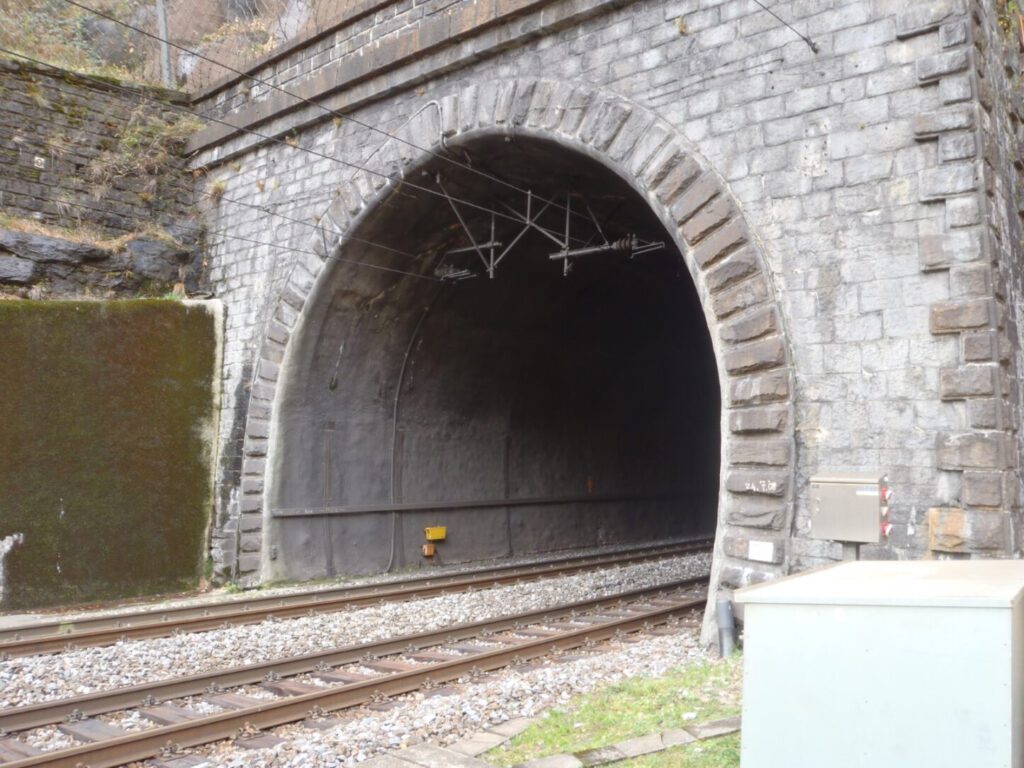
Challenge
Historic masonry behaves differently from modern reinforced structures. In this case, engineers faced several concerns:
-
The age of the wall (well over 100 years old)
-
Its location between two closely aligned rail lines
-
Limited possibilities for reinforcement
-
The risk of progressive structural disintegration or sudden detachment
Traditional inspections could not reliably detect sub-millimetre movement or identify the early indicators of material weakening. A continuous monitoring strategy was required.
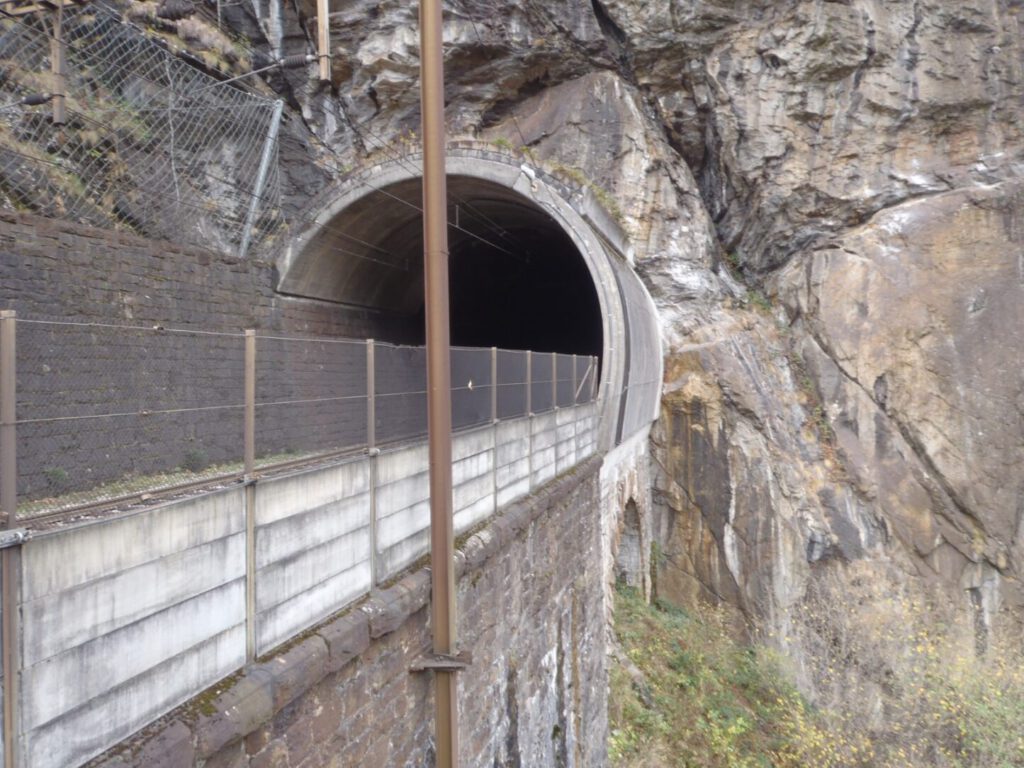
Monitoring the stability of the tunnel wall along the old Gotthard line — a key location where structural movement is continuously measured.
Tunnel Wall Stability Monitoring Approach
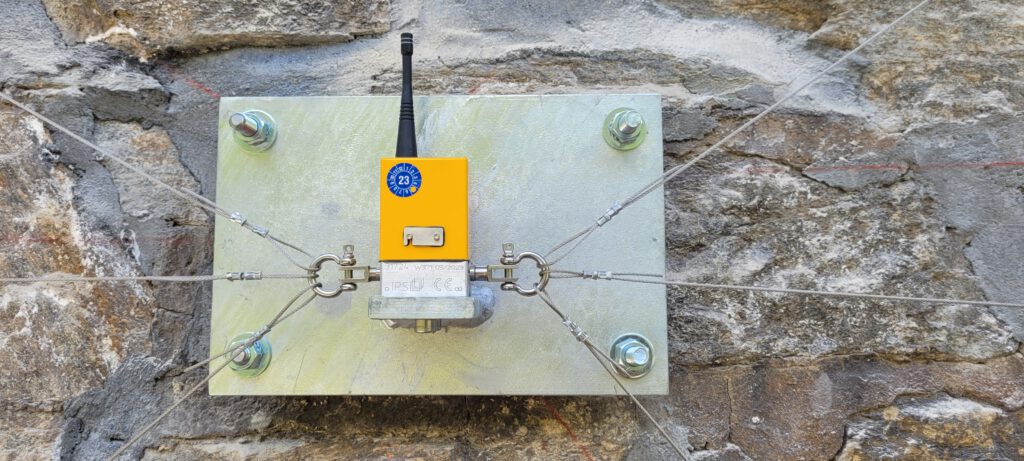
Impact Sentinel sensor mounted on the Gotthard tunnel wall to detect vibration and long-term structural movement.
A series of compact, autonomous sensors were mounted directly onto the stone wall. These units monitor:
-
Tilt movement – detecting long-term deformation or lean
-
Vibration – caused by train traffic or external disturbances
-
Pullout conditions – signalling if part of the wall detaches from its structure
Each sensor transmits scheduled health messages every ~10,000 seconds, capturing baseline movement trends over time. Following any vibration event, the system automatically records and transmits an updated tilt measurement.
A sudden positional shift—such as in a collapse—would produce a distinct signature, immediately triggering an alert.
Data Interpretation & Tunnel Wall Behaviour
Most small variations detected to date are attributed not to wall instability, but to temperature-related expansion or contraction of the metal mounting brackets. This is typical for historic masonry installations and underscores the importance of long-term trend interpretation.
Establishing accurate alarm thresholds remains a core focus of the programme. The configuration must balance:
-
Sensitivity to genuine movement
-
Avoiding unnecessary alarms
-
Preserving battery life in low-power installations
The project highlights the complexity of evaluating ageing infrastructure and the importance of continuous, expert review of incoming data.
Operational Value of Tunnel Wall Stability Monitoring
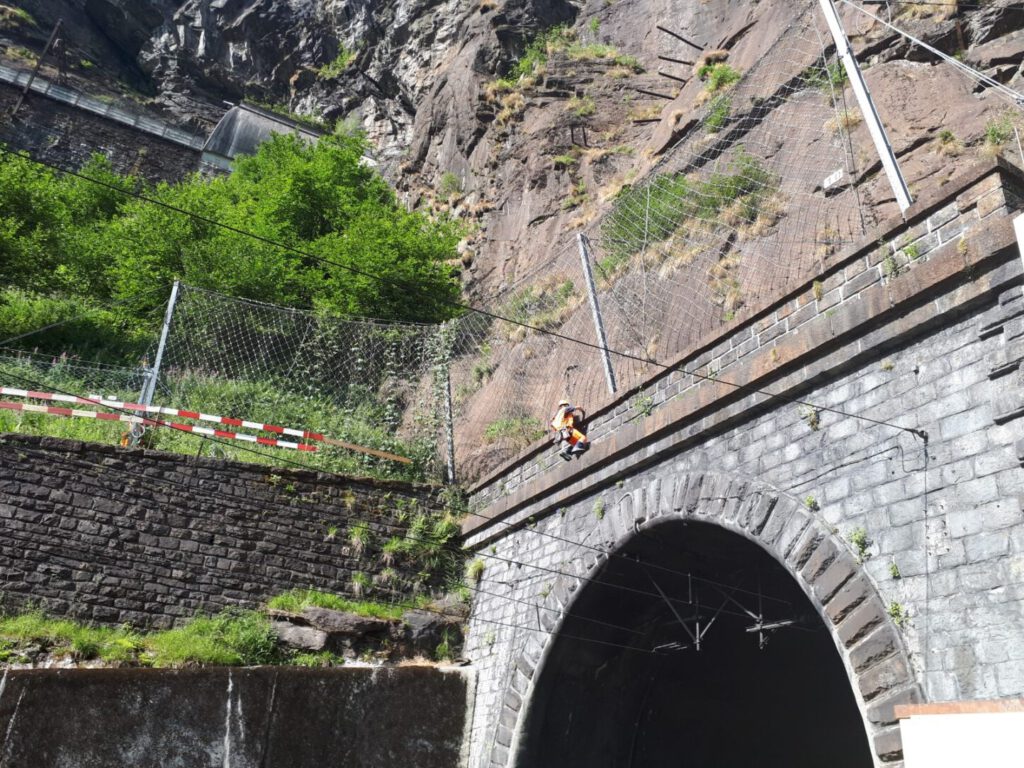
A rope-access specialist inspects the rockfall protection and tunnel portal on the historic Gotthard line, where Impact Sentinel sensors support long-term structural and hazard monitoring.
Although the monitored wall has shown minimal meaningful movement so far, the system has delivered major operational benefits:
-
Independent verification of structural stability
-
Immediate alert capability if movement or collapse occurs
-
Reliable long-term behavioural data to support engineering decisions
-
Low-maintenance autonomy, enabling consistent monitoring in a remote location
The system contributes directly to Swiss Federal Railways’ wider asset-management strategy by providing precise, long-term insight into how historic masonry responds to environmental and operational loads.
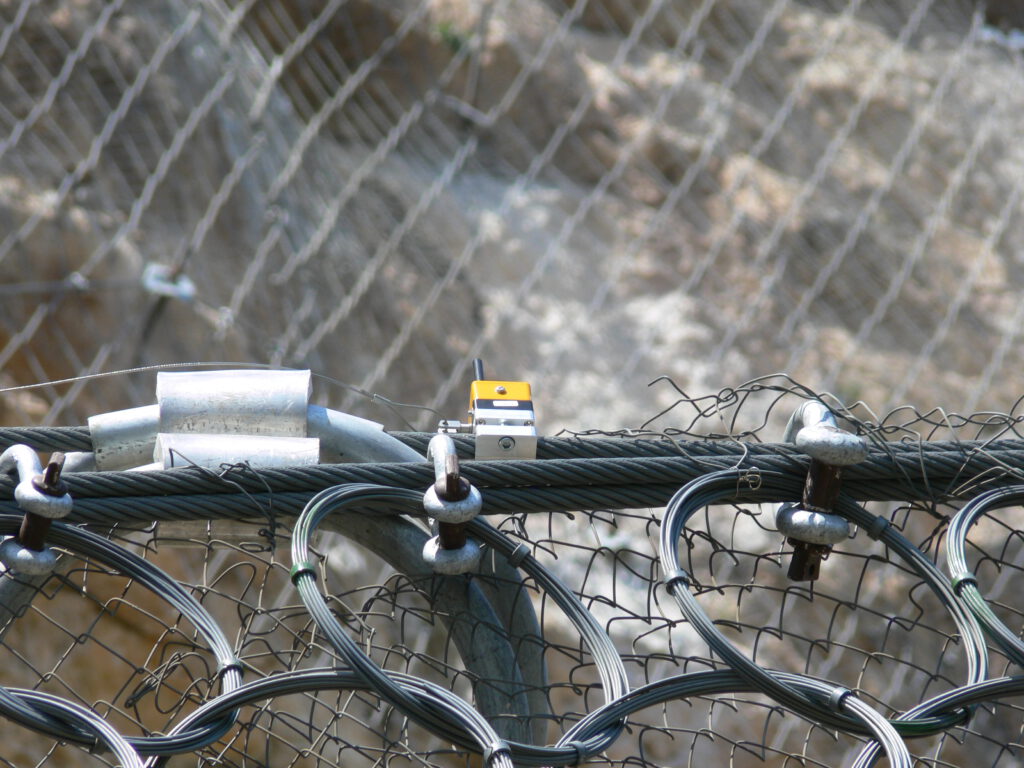
Impact Sentinel sensor installed on a rockfall protection barrier, monitoring impacts and barrier deformation in real time.
The Faido tunnel-wall monitoring project illustrates how modern sensing technology can enhance the safety of historic railway assets.
Through continuous tracking of tilt, vibration, and structural movement, the system delivers early warnings and long-term behavioural insights critical for both operational safety and infrastructure preservation.
Real-time monitoring gives operators a clearer understanding of emerging risks—ensuring the enduring Gotthard route remains safe, reliable, and resilient for decades to come.
